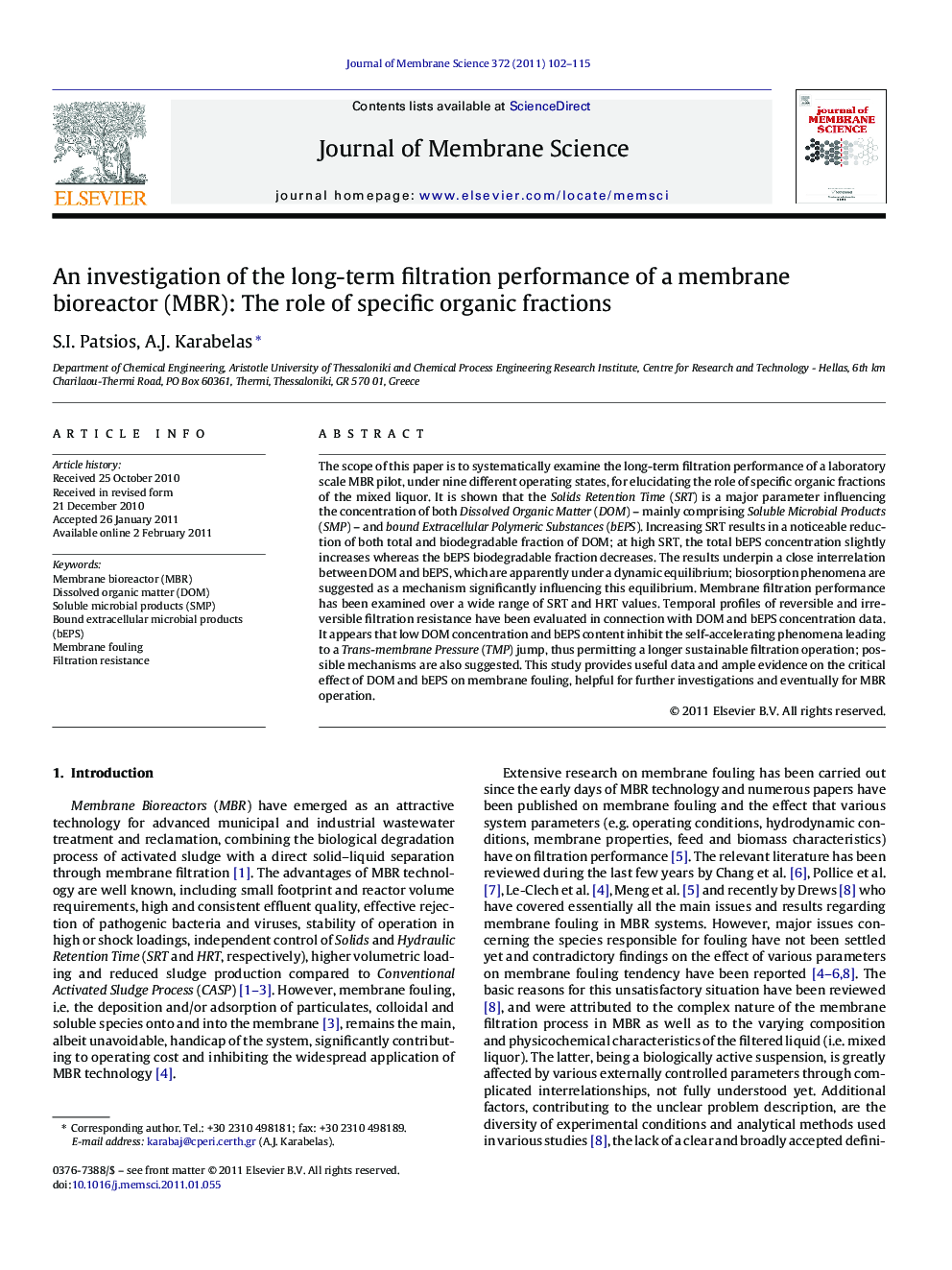| کد مقاله | کد نشریه | سال انتشار | مقاله انگلیسی | نسخه تمام متن |
|---|---|---|---|---|
| 635455 | 1456107 | 2011 | 14 صفحه PDF | دانلود رایگان |

The scope of this paper is to systematically examine the long-term filtration performance of a laboratory scale MBR pilot, under nine different operating states, for elucidating the role of specific organic fractions of the mixed liquor. It is shown that the Solids Retention Time (SRT) is a major parameter influencing the concentration of both Dissolved Organic Matter (DOM) – mainly comprising Soluble Microbial Products (SMP) – and bound Extracellular Polymeric Substances (bEPS). Increasing SRT results in a noticeable reduction of both total and biodegradable fraction of DOM; at high SRT, the total bEPS concentration slightly increases whereas the bEPS biodegradable fraction decreases. The results underpin a close interrelation between DOM and bEPS, which are apparently under a dynamic equilibrium; biosorption phenomena are suggested as a mechanism significantly influencing this equilibrium. Membrane filtration performance has been examined over a wide range of SRT and HRT values. Temporal profiles of reversible and irreversible filtration resistance have been evaluated in connection with DOM and bEPS concentration data. It appears that low DOM concentration and bEPS content inhibit the self-accelerating phenomena leading to a Trans-membrane Pressure (TMP) jump, thus permitting a longer sustainable filtration operation; possible mechanisms are also suggested. This study provides useful data and ample evidence on the critical effect of DOM and bEPS on membrane fouling, helpful for further investigations and eventually for MBR operation.
Research highlights
► The performance of a laboratory MBR pilot is investigated, under nine different operating states, for elucidating the role of specific organic fractions such as Dissolved Organic Matter (DOM) and bound Extracellular Polymeric Substances (bEPS).
► It is shown that the Solids Retention Time (SRT) is a major parameter influencing the concentration of both DOM and bEPS.
► The study sheds light into, and provides ampleevidence on, the critical effect of DOM and bEPS on membrane fouling.
► Among other parameters, the temporal variation of reversible and irreversible filtration resistance is evaluated in connection with DOM and bEPS concentration data.
Journal: Journal of Membrane Science - Volume 372, Issues 1–2, 15 April 2011, Pages 102–115